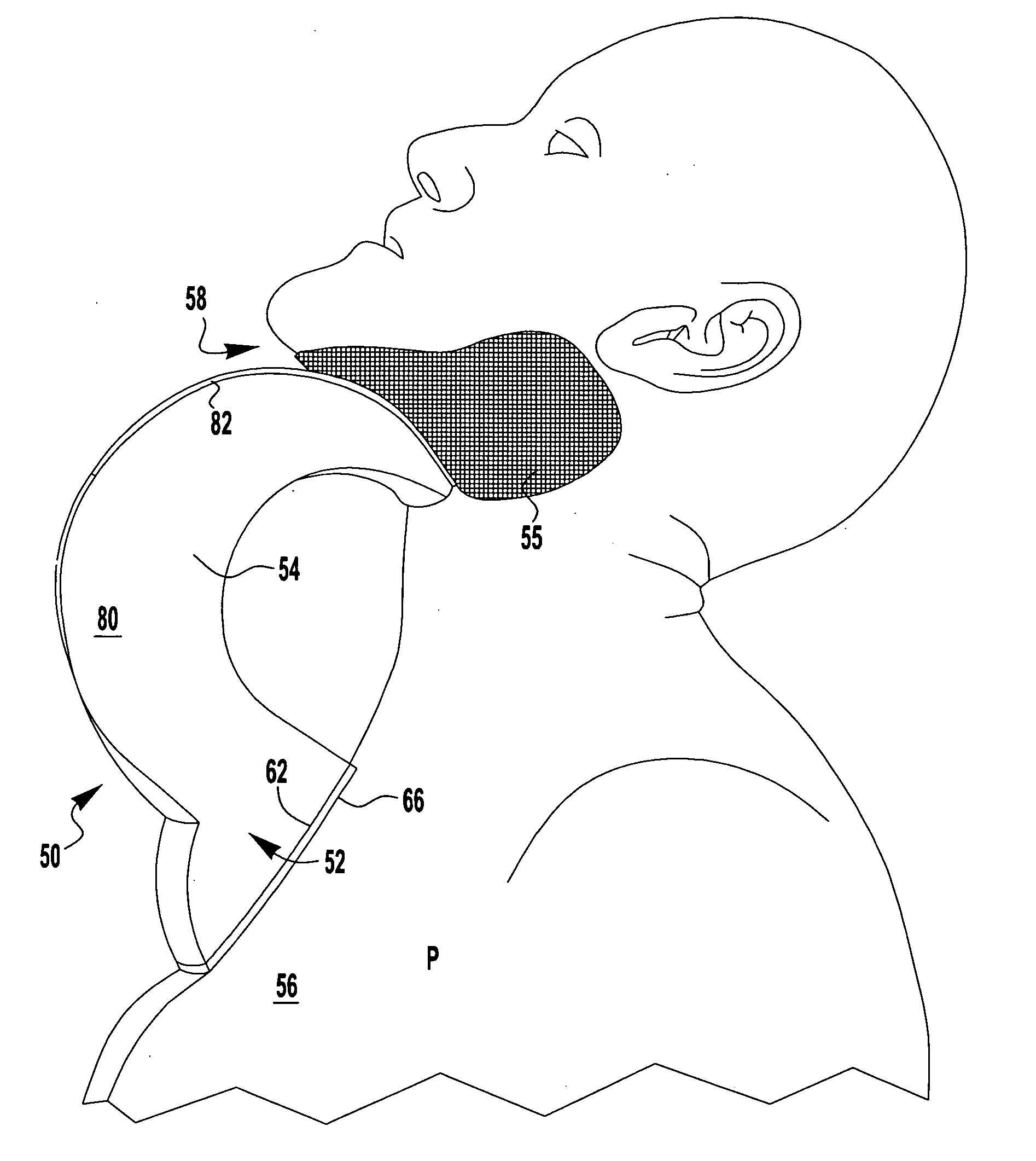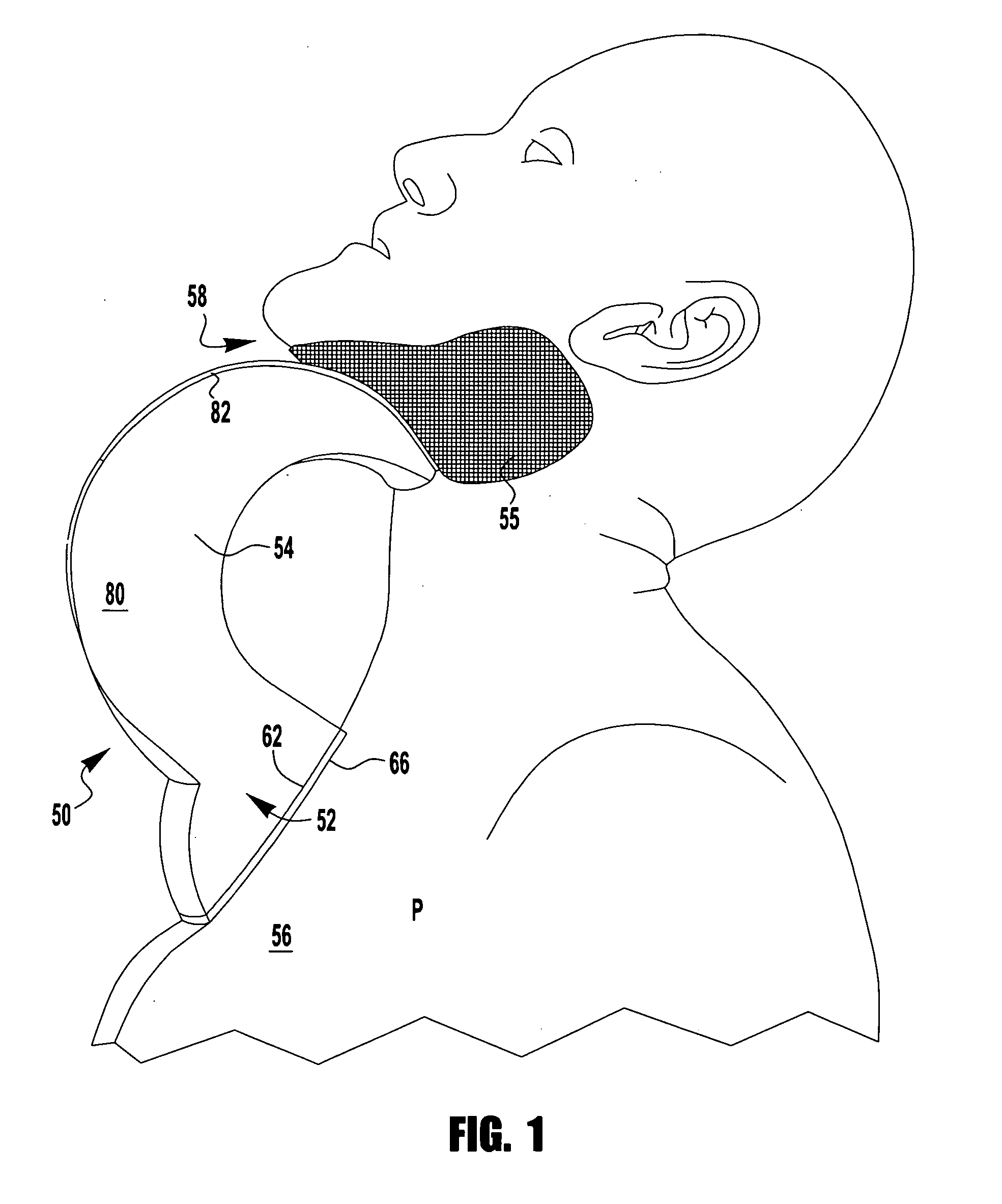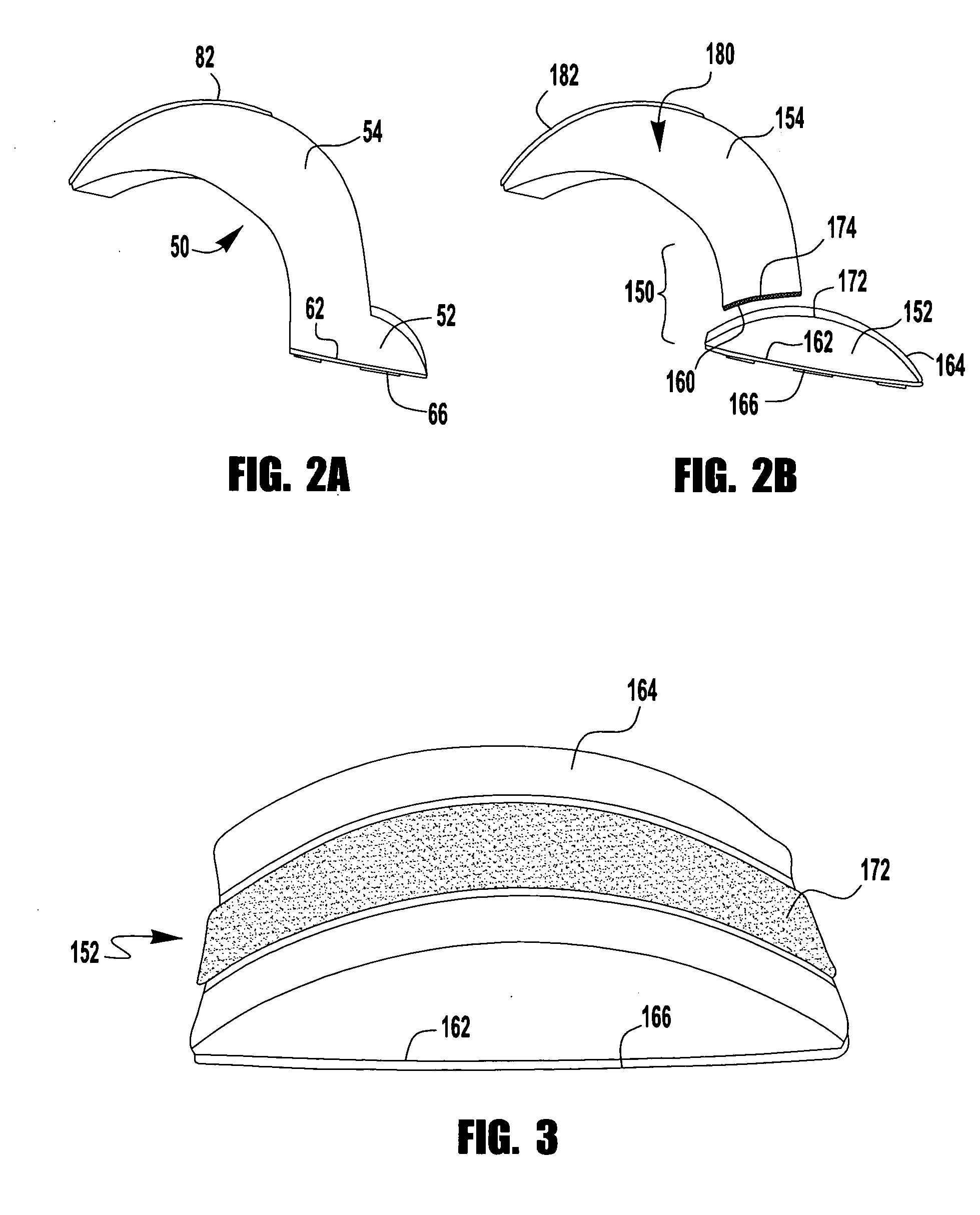Therapeutic/diagnostic external airway position support (EAPS) device and method
a position support and therapeutic technology, applied in the field of anesthesia delivery, can solve the problems of compromising free respiratory exchange, compromising patient comfort, and compromising the upper airway, etc., and achieves the effects of convenient use on a patient, convenient disposable, and low cos
- Summary
- Abstract
- Description
- Claims
- Application Information
AI Technical Summary
Benefits of technology
Problems solved by technology
Method used
Image
Examples
third embodiment
[0046]In accompanying FIGS. 11, 12A, 12B and 12C, there is shown EAP device, generally 250, that has an overall circular appearance in top view. Before inflation, device 250 has a somewhat Z-shaped design with a fattened or rounded, central region 251. It may also resemble the symbol for a hurricane on weather maps.
[0047]Device 250 may be made from an inflatable plastic liner preconfigured to have a lowermost chest contacting, or manubrium portion 252 and an upper or top mandibular portion 254 on opposite sides of central region 251. The side edge 255, between front and rear faces to device 250, is contoured to resemble a continuous V-shape. With that configuration, device 250 can serve as a suitable chin-rest when positioned beneath the mandibular region 258 of patient P.
[0048]As shown, both the lower portion 252 and top portion 254 have separate valves, 252v and 254v, respectively. When connected to a pump, gas can or other air supplying means (not shown), each valve causes a ball...
fourth embodiment
[0051]Referring to FIGS. 13 and 14, there is shown a fourth embodiment wherein device 350 has a plurality of chambers 350c that upon inflation will accordion upwardly from a starting position to expand between the patient's upper chest 356 and chin 358. As shown, device 350 is essentially C-shaped, though in the embodiment at FIG. 13, a structural vertical reinforcement 355 gives the device 350 somewhat of a hinged appearance. Regardless, it is preferred that regardless of the number of baffles comprising device 350, they should all be filled (and subsequently deflated) through a single, common valve 350v.
[0052]For illustrative purposes, the lower end of device 350 is provided with a first layer of adhesive 366L for sticking to a patient's manubrium 356 and / or partially about the anterior base of their neck. On the opposite end, the uppermost surface of device 350 has its own adhesive layer 366U for adjoining same to the wearer's chin, or mandibular region 358.
[0053]Any of the fore...
PUM
 Login to View More
Login to View More Abstract
Description
Claims
Application Information
 Login to View More
Login to View More - R&D
- Intellectual Property
- Life Sciences
- Materials
- Tech Scout
- Unparalleled Data Quality
- Higher Quality Content
- 60% Fewer Hallucinations
Browse by: Latest US Patents, China's latest patents, Technical Efficacy Thesaurus, Application Domain, Technology Topic, Popular Technical Reports.
© 2025 PatSnap. All rights reserved.Legal|Privacy policy|Modern Slavery Act Transparency Statement|Sitemap|About US| Contact US: help@patsnap.com



